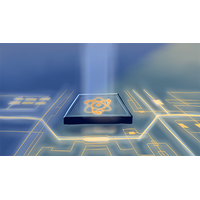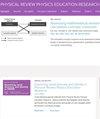Investigating and improving student understanding of the basics of quantum computing
IF 3.6
2区 教育学
Q1 EDUCATION & EDUCATIONAL RESEARCH
Physical Review Physics Education Research
Pub Date : 2024-08-06
DOI:10.1103/physrevphyseducres.20.020108
引用次数: 0
Abstract
Quantum information science and engineering (QISE) is a rapidly developing field that leverages the skills of experts from many disciplines to utilize the potential of quantum systems in a variety of applications. It requires talent from a wide variety of traditional fields, including physics, engineering, chemistry, and computer science, to name a few. To prepare students for such opportunities, it is important to give them a strong foundation in the basics of QISE, in which quantum computing plays a central role. In this study, we discuss the development, validation, and evaluation of a Quantum Interactive Learning Tutorial, on the basics and applications of quantum computing. These include an overview of key quantum mechanical concepts relevant to quantum computation (including ways a quantum computer is different from a classical computer), properties of single- and multiqubit systems, and the basics of single-qubit quantum gates. The tutorial uses guided inquiry-based teaching-learning sequences. Its development and validation involved conducting cognitive task analysis from both expert and student perspectives and using common student difficulties as a guide. For example, before engaging with the tutorial, after traditional lecture-based instruction, one reasoning primitive that was common in student responses is that a major difference between an -bit classical and -qubit quantum computer is that various things associated with a number for a classical computer should be replaced with the number for a quantum computer (e.g., qubits must be initialized and bits of information are obtained as the output of the computation on the quantum computer). This type of reasoning primitive also led many students to incorrectly think that there are only distinctly different states available when computation takes place on a classical computer. Research suggests that this type of reasoning primitive has its origins in students learning that quantum computers can provide exponential advantage for certain problems, e.g., Shor’s algorithm for factoring products of large prime numbers, and that the quantum state during the computation can be in a superposition of linearly independent states. The inquiry-based learning sequences in the tutorial provide scaffolding support to help students develop a functional understanding. The final version of the validated tutorial was implemented in two distinct courses offered by the physics department with slightly different student populations and broader course goals. Students’ understanding was evaluated after traditional lecture-based instruction on the requisite concepts and again after engaging with the tutorial. We analyze and discuss their improvement in performance on concepts covered in the tutorial.

调查并加深学生对量子计算基础知识的理解
量子信息科学与工程(QISE)是一个快速发展的领域,它利用许多学科专家的技能,在各种应用中发挥量子系统的潜力。它需要各种传统领域的人才,包括物理学、工程学、化学和计算机科学等等。为了让学生做好准备,迎接这样的机遇,必须为他们打下坚实的量子信息学基础,而量子计算在其中发挥着核心作用。在本研究中,我们讨论了量子互动学习教程的开发、验证和评估,内容涉及量子计算的基础知识和应用。其中包括与量子计算相关的关键量子力学概念概述(包括量子计算机与经典计算机的不同之处)、单量子比特和多量子比特系统的特性以及单量子比特量子门的基础知识。该教程采用引导探究式教学顺序。该教程的开发和验证包括从专家和学生的角度进行认知任务分析,并以学生常见的困难为指导。例如,在接触该教程之前,经过传统的讲授式教学后,学生回答中常见的一个推理原点是,N比特经典计算机与N比特量子计算机的主要区别在于,经典计算机中与数字N相关的各种事物应被量子计算机中的数字2N所取代(例如,必须初始化2N个量子比特,量子计算机上的计算输出为2N比特信息)。这类推理原型还让许多学生错误地认为,在经典计算机上进行计算时,只有 N 种截然不同的状态。研究表明,这类推理原型源于学生了解到量子计算机可以为某些问题提供指数级的优势,例如肖尔算法对大素数乘积的因式分解,以及计算过程中的量子态可以是 2N 个线性独立状态的叠加。教程中的探究式学习序列提供了脚手架支持,帮助学生形成功能性理解。经过验证的教程最终版本在物理系开设的两门不同课程中实施,这两门课程的学生人数和课程目标略有不同。在对必要的概念进行传统的讲授式教学后,对学生的理解能力进行了评估,并在使用教程后对学生的理解能力再次进行了评估。我们分析并讨论了他们在教程所涉及的概念方面的成绩提高情况。
本文章由计算机程序翻译,如有差异,请以英文原文为准。
求助全文
约1分钟内获得全文
求助全文
来源期刊

Physical Review Physics Education Research
Social Sciences-Education
CiteScore
5.70
自引率
41.90%
发文量
84
审稿时长
32 weeks
期刊介绍:
PRPER covers all educational levels, from elementary through graduate education. All topics in experimental and theoretical physics education research are accepted, including, but not limited to:
Educational policy
Instructional strategies, and materials development
Research methodology
Epistemology, attitudes, and beliefs
Learning environment
Scientific reasoning and problem solving
Diversity and inclusion
Learning theory
Student participation
Faculty and teacher professional development
 求助内容:
求助内容: 应助结果提醒方式:
应助结果提醒方式:


